

The Mayborn Literary Nonfiction Writers Conference of the Southwest
* If you are unable to view Speaker's full bio, please click on icon below to download the latest
version of Adobe Reader.![]()
Keynote Speakers
![]()
 JOYCE CAROL OATES is a literary legend, one of America’s most prolific, versatile and distinguished writers of the last century. She has written novels, short story collections, several volumes of poetry, books of plays, five books of literary criticism, and some of the most savvy and penetrating nonfiction essays, articles and books published in the last 25 years. No wonder the renowned novelist John Gardner called her "one of the greatest writers of our time."
JOYCE CAROL OATES is a literary legend, one of America’s most prolific, versatile and distinguished writers of the last century. She has written novels, short story collections, several volumes of poetry, books of plays, five books of literary criticism, and some of the most savvy and penetrating nonfiction essays, articles and books published in the last 25 years. No wonder the renowned novelist John Gardner called her "one of the greatest writers of our time."
Keynote Lecture: Turning Nonfiction Into Art: A Process That Involves First-Rate Reportage and New Strategies of Form
Joyce Carol Oates believes the aim and art of the contemporary nonfiction essay, or memoir, is a heightened attention to detail that allows the reader to see, hear, witness, as if at first hand, what the writer has witnessed. This attention to detail, she says, is often drawn from first-rate reportage and new strategies of form. Oates notes that there’s “an infinite variety of realities that are available to us as writers.” The challenge for nonfiction writers, she says, is make these realities come alive on the page through the appropriate selection of detail, nuanced prose, pacing, structure, fragmentation, collage and other “aesthetic strategies of fiction.” When nonfiction writers employ these appoaches, she says their stories are “likely to be valued as art, not journalism.” Oates will use a few selections from her book, On Boxing and her memoir-in-progress, The Lost Landscape, to illustrate some of the literary devices she employs in her nonfiction prose.
http://jco.usfca.edu
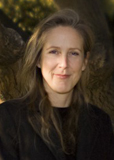 MARY ROACH is an American original, an uproariously funny writer with a trenchant wit and an eye for the oddball. In her monthly column for Readers Digest and in her essays and feature articles for Outside, Wired, GQ, Salon.com and The New York Times Magazine, her writing gravitates toward the peculiar: flatulence, Eskimo food, vaginal weight-lifting, carrot addiction, amputee bowling leagues, and the question of how much food it takes to burst a human stomach.
MARY ROACH is an American original, an uproariously funny writer with a trenchant wit and an eye for the oddball. In her monthly column for Readers Digest and in her essays and feature articles for Outside, Wired, GQ, Salon.com and The New York Times Magazine, her writing gravitates toward the peculiar: flatulence, Eskimo food, vaginal weight-lifting, carrot addiction, amputee bowling leagues, and the question of how much food it takes to burst a human stomach.
Keynote Lecture: Would You Like to See the Whale Tapeworm? Stalking colorful sources, priceless moments and other essential ingredients for memorable nonfiction
It's not just fine writing that makes nonfiction "literary." It is creative, dogged reporting.
And pre-reporting: all the work that goes into tracking down memorable characters and vivid settings, narrative material so entertaining that a writer isn't tempted to fictionalize or embellish. Mary Roach talks about the relationship between writer and reality, and how to wring larger-than-life writing out of life-sized realities.
www.booknoise.net/stiff
www.spookthebook.com
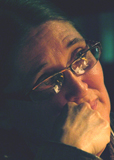 ALLISON HEDGE COKE, of Cherokee, Creek and Huron lineage, learned at an early age to use words that "have movement and dance within them ... words to breathe." In Rock, Ghost, Willow, Deer: A Story of Survival, the award-winning author has written a powerful memoir that breathes and moves "fluidly across boundaries between prose and poetry, dream and reality, myth and history, animal and human, the personal and political," as one book reviewer put it. Rock, Ghost, Willow, Deer is a narrative of her life as a mixed-blood woman coming of age off reservation; her schizophrenic mother and the abuse that often overshadowed her childhood; the torments visited upon her; the rape and physical violence; and the violence she inflicted on herself.
ALLISON HEDGE COKE, of Cherokee, Creek and Huron lineage, learned at an early age to use words that "have movement and dance within them ... words to breathe." In Rock, Ghost, Willow, Deer: A Story of Survival, the award-winning author has written a powerful memoir that breathes and moves "fluidly across boundaries between prose and poetry, dream and reality, myth and history, animal and human, the personal and political," as one book reviewer put it. Rock, Ghost, Willow, Deer is a narrative of her life as a mixed-blood woman coming of age off reservation; her schizophrenic mother and the abuse that often overshadowed her childhood; the torments visited upon her; the rape and physical violence; and the violence she inflicted on herself.
Keynote Lecture: Out of Madness: Crafting a Bitter Sweet Memoir from the Substance of a
Strange Life
Twisting hard fact and emotional truth into story is a task that can deliver unexpected transcendence. This is the quest of memoir: To spin the mirror of reflection on one's life until it reveals what had previously evaded view. In the spinning, the vision of self that is revealed is much less important than the vision of the human condition. Simply put, memoirs mirror both the fragility and resilience of humanity. At least that's what my life narrative does. In unraveling memory - delving into the conflict, paradox and wonder of my life as a daughter of the village crazy - I arrived at a deeper understanding of my Indigenous heritage, my culture, my purpose. But it isn't an easy process. It takes courage. As the second daughter of the village crazy, my life was filled with madness and chaos, complicated all the more by ridiculous cultural/racial conditions all around me. I put off writing Rock, Ghost, Willow, Deer until I finally came to realize the only thing I had to lose was the madness of it all. In the years that followed that decision, I discovered that putting my life narrative on the page would require a combination of craft, process, and commitment beyond anything I had imagined. In writing a memoir, you get what you give.
www.iaia.edu/college/AllisonHedgeCoke.php
www.hedgecoke.net
www.hedgecoke.org
Speakers:
![]()
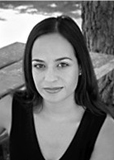 CECILIA BALLI is a contributing writer for Texas Monthly. She is currently working on a nonfiction book about the murder of young women in Ciudad Juárez, Mexico, for Metropolitan Books. A native of Brownsville, Texas, she has written many stories about the U.S.-Mexico border. Her personal essays have appeared in various anthologies, including Puro Border (Cinco Puntos Press), Colonize This! (Seal Press), Border-line Personalities (Rayo/Harpercollins), and Rio Grande (UT Press).
CECILIA BALLI is a contributing writer for Texas Monthly. She is currently working on a nonfiction book about the murder of young women in Ciudad Juárez, Mexico, for Metropolitan Books. A native of Brownsville, Texas, she has written many stories about the U.S.-Mexico border. Her personal essays have appeared in various anthologies, including Puro Border (Cinco Puntos Press), Colonize This! (Seal Press), Border-line Personalities (Rayo/Harpercollins), and Rio Grande (UT Press).
Lecture: Immersion Journalism: Taking the Perilous Journey Toward the Emotional Truth of Our Stories
Journalists, among other writers of nonfiction, feel deeply ambivalent about human emotion. Our profession’s tradition promotes the belief that emotions cloud our thinking, skew our judgment, and yield nothing in the form of knowledge. But our growing engagement with immersion journalism suggests the opposite. We have discovered that at the core of many of the world’s most powerfully written nonfiction stories – beneath the layers of meticulously gathered information, descriptions and quotations – lie emotional truths that make narrative capable of transcending both its context and its medium. How far should we reach toward those emotional truths as writers? Once we believe we’ve reached them, how do we communicate in words what seems to elude language? And what happens to us as emotional beings as we undertake this tricky journey? Sharing from her own experience doing research for a narrative nonfiction book about the brutal killing of women along the Mexican-U.S. border, Texas Monthly writer Cecilia Ballí will address the pivotal question of how to find and write emotional truths into stories without compromising journalistic accuracy and perspective. As nonfiction writers, we must become attuned to what lies at stake emotionally, both for our protagonists, as they confront their life situations; and for us, as we try to mold unforgettable stories out of their messy realities. We need to understand why our writing suffers when we avoid that journey, but also how that journey presents its own set of occupational risks and consequences.
 DENISE WATSON BATTS is a member of a four-person team of writers that specializes in narrative writing. Batts wrote her first story on the underside of her parents' wooden coffee table when she was thigh-high. She likes to believe she’s gotten better since then. She’s been a staffer for the The Virginian-Pilot for 15 years and spent a year at The St. Petersburg Times in Florida.
DENISE WATSON BATTS is a member of a four-person team of writers that specializes in narrative writing. Batts wrote her first story on the underside of her parents' wooden coffee table when she was thigh-high. She likes to believe she’s gotten better since then. She’s been a staffer for the The Virginian-Pilot for 15 years and spent a year at The St. Petersburg Times in Florida.
Lecture: Life on the banks: Finding narrative in everyday life.
Writer and philosopher Will Durant said it best: “Civilization is a stream with banks. The stream is sometimes filled with blood from people killing, stealing, shouting and doing things historians usually record, while on the banks, unnoticed, people build homes, make love, raise children, sing songs, write poetry...The story of civilization is what happened on the banks.’’ Hanging on the banks, that’s where The Virginian-Pilot’s narrative team finds its best stories. Not on Main Street, but in the alley over. By swooping in when the news cameras have long gone and the main headlines have died. Denise Watson Batts will discuss how to unearth fresh stories buried by the obvious and how to bring them home in creative ways.
 BURKHARD BILGER has been a staff writer at The New Yorker since 2000. His work has also appeared in The Atlantic Monthly, Harper’s, The New York Times, The New York Times Book Review, and numerous other publications, and has been anthologized in The Best American Science and Nature Writing, The Best American Food Writing and The Best American Sports Writing. Bilger was a senior editor at Discover magazine from 1999 to 2005, and a writer and deputy editor for The Sciences from 1994 to 1999, where his work helped garner two National Magazine Awards and six nominations.
BURKHARD BILGER has been a staff writer at The New Yorker since 2000. His work has also appeared in The Atlantic Monthly, Harper’s, The New York Times, The New York Times Book Review, and numerous other publications, and has been anthologized in The Best American Science and Nature Writing, The Best American Food Writing and The Best American Sports Writing. Bilger was a senior editor at Discover magazine from 1999 to 2005, and a writer and deputy editor for The Sciences from 1994 to 1999, where his work helped garner two National Magazine Awards and six nominations.
Lecture: Noodling for Narratives in Science and Nature? Try Supping on Squirrel Brains
Whether writing about the race to exploit the richest gem deposits on earth in Madagascar or an arachnologist on a spider-hunting trip in the southwest, Burkhard Bilger, a straff writer for the New Yorker and a native of Oklahoma, begins the research for his stories like any child fascinated with nature and science. He’ll go skydiving with a French astronaut, hike for miles in prehistoric shoes, make cheese with a nun-turned-microbiologist, or sling homefries in Las Vegas tos tudy the neurobiology of short-order cooking. For his story on spiders, he crawled through basements in Los Angeles, New York and Tucson (the “spider-bite capital of the United States”) collecting some of the world’s most dangerous species and helping to milk their venom at at spider farm in Arizona. Bilger believes that science writers can learn much from the “experimental villainies” of French entomologist Jean-Henri Fabre, who spent the last years of his life studying bugs in his garden. Fabre combined a scientist’s logic and precise observation with a novelist’s language and sense of narrative. His descriptions of two tarantulas locked in deadly combat, or of a young sparrow dying from a spider bite, function both as case studies and as miniature existential dramas. As Bilger points out, “Time spent in the company of spiders can cure anyone of his sentimentality.”
www.pilotonline.com
 ERIK CALONIUS is a former reporter, editor and London-based foreign correspondent for The Wall Street Journal, a staff writer for Fortune magazine and Miami bureau chief for Newsweek. In 2006, Calonius completed his first narrative nonfiction book, The Wanderer: The Last American Slave Ship and the Conspiracy That Set Its Sails. Hampton Sides, a Mayborn Conference former speaker and author of Ghost Soldiers and Blood and Thunder, says "The Wanderer is my favorite kind of history: a voyage into the turbid waters of a past we thought we knew, a past we scarcely could have imagined."
ERIK CALONIUS is a former reporter, editor and London-based foreign correspondent for The Wall Street Journal, a staff writer for Fortune magazine and Miami bureau chief for Newsweek. In 2006, Calonius completed his first narrative nonfiction book, The Wanderer: The Last American Slave Ship and the Conspiracy That Set Its Sails. Hampton Sides, a Mayborn Conference former speaker and author of Ghost Soldiers and Blood and Thunder, says "The Wanderer is my favorite kind of history: a voyage into the turbid waters of a past we thought we knew, a past we scarcely could have imagined."
Lecture: Dredging a Slave Ship Narrative Out of the Murky Waters of History is Hard Slogging
In 1858 a slave ship landed on Jekyll Island, Georgia, igniting a national debate that helped push the nation into civil war. Then, almost as suddenly, the story of the slave ship, her crew, and her captives disappeared beneath the waves of history and was largely forgotten. It took Erik Calonius in “The Wanderer: The Last American Slave Ship and the Conspiracy that Set Its Sails” to bring the Wanderer episode back to the full light of day. But the Wanderer didn’t give up her secrets easily. In writing his story, Calonius and an assistant spent months digging into the resources of the National Archives, the Library of Congress, the Georgia Historical Society Library, and many other repositories. Then it was a matter of shaping the voluminous research. What should be left out, and what kept in? Where is the narrative thread in it all? And most importantly, how do you take dry documents—court records and microfilmed records—and turn them into a flesh and blood tale? Calonius describes how he made order out of chaos, and brought life to this long-forgotten story.
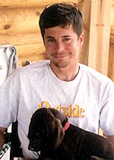 KEVIN FEDARKO, one of Outside magazine's "Literary All-Stars" and a senior editor of the magazine from 1998 to 2003, lives in northern New Mexico and works as a part-time river guide in Grand Canyon National Park. In addition to his travel narratives in Outside, Fedardko's work has appeared in Esquire, National Geographic Adventure, and other publications, and has been anthologized in The Best American Travel Writing in 2004 and 2006.
KEVIN FEDARKO, one of Outside magazine's "Literary All-Stars" and a senior editor of the magazine from 1998 to 2003, lives in northern New Mexico and works as a part-time river guide in Grand Canyon National Park. In addition to his travel narratives in Outside, Fedardko's work has appeared in Esquire, National Geographic Adventure, and other publications, and has been anthologized in The Best American Travel Writing in 2004 and 2006.
Lecture: Adventure Writing: It Sucks Bad, and It Really Needs To
For the last 30 years, Outside has served as an incubation chamber for leading practitioners of the adventure-travel story, a sub-genre of literary non-fiction that is strongly influenced by two centuries of British and European travel writing, and that evolved from its initial expression to its full maturity in the U.S. between 1977 (the year in which Outside put out its first issue) and 1997, when John Krakauer published "Into Thin Air". Kevin Fedarko, who has worked for Outside as both a staff editor and a freelance writer, was inspired as a teenager by the magazine’s commitment to publishing the work of people like Tim Cahill, Kate Wheeler, Bob Shacochis, David Quammen, and Randy Wayne White — writers whose stories initially led Fedarko to suppose that mastering adventure writing at its highest level involves embracing the notion that there is, in fact, little difference between being on assignment in a remote and deeply exotic place, and taking a really, really great vacation. Lord was he wrong. Drawing examples from a litany of wretched assignments that have taken him to northeastern Kashmir, the crest of Caucasus, the Horn of Africa, the Canadian Arctic, the deserts of northern Mexico, and the Grand Canyon, Fedarko will share some of the painful epiphanies he underwent — and continues to undergo with each successive feature as he hones his craft. “Generally, readers are drawn to stories about climbing dangerous mountains, boating perilous rivers, or penetrating austere territories far from the comforts of civilization only insofar as these narratives involve a personal or a spiritual journey of some kind,” says Fedarko. “It should come as no surprise to learn that the physical aspect of this journey is often a metaphor for an abstract odyssey that is far more complex, substantive, and engaging. What came as a surprise to me, though, was to learn that not only are these experiences almost universally unpleasant, but reporting them often demands that one suffer the misery firsthand.” And thus the cruel conundrum of the adventure writer: Good travel generally makes for bad stories. Bad travel, if you’re verylucky, may make for a good story. And lousy, awful, please-hand-me-that-gun-so-I-can-shoot-myself-in-the-head travel — while getting you into more trouble than you ever imagined and making you wish that you’d never, ever, left home — can occasionally take you into the realm of potentially great adventure writing.
Outside Magazine podcasts, "High Times" by Kevin Fedarko
"The Coldest War" by Kevin Fedarko
High Times (Outside, July 2007)
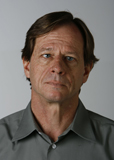 TONY FREEMANTLE, writing coach and editor-at-large for the Houston Chronicle, was schooled in the world of journalism in Johannesburg, South Africa, where he was born. After immigrating to Houston in 1980, he worked briefly for the now-defunct Houston Post before joining the Houston Chronicle. During the past 25 years, Freemantle has been a police reporter, an assistant city editor, national correspondent, foreign correspondent and a special projects and environment reporter.
TONY FREEMANTLE, writing coach and editor-at-large for the Houston Chronicle, was schooled in the world of journalism in Johannesburg, South Africa, where he was born. After immigrating to Houston in 1980, he worked briefly for the now-defunct Houston Post before joining the Houston Chronicle. During the past 25 years, Freemantle has been a police reporter, an assistant city editor, national correspondent, foreign correspondent and a special projects and environment reporter.
Lecture: Storytellers Take Heart: The age of the Internet will finally set you free
Journalists in the early days of the 21st Century are understandably nervous about the future of the profession. The new technology of the new century will utterly change the landscape of journalism in ways that are only now emerging. Already it is clear that newspapers are shifting breaking news operations to their Web sites, many of them on a 24 hours a day, seven days a week basis. The inverted pyramid lives again. For writers and reporters who have been nudging their editors away from “news voice” toward a more narrative style of writing and reporting, this is not good news, at least superficially. But it could be argued that his trend actually offers a rare opportunity to the practioners of narrative non-fiction in newspapers. Major papers, free of the need to remain relevant in a 24-hour news cycle, are now concentrating on more in-depth content in their paper product. They will seek to provide more background, context, depth, analysis and story-telling. Perhaps the age of the internet will usher in the age of the “literary journalist,” where, freed from the need to “feed the beast,” even breaking news stories will offer the opportunity for writers to stretch themselves and develop “hard news narratives.” Instead of seeing the rise of internet journalism as a threat, Tony Freemantle thinks literary journalists should see it is a friend, setting free the writer inside the journalist.
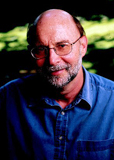 STEPHEN HARRIGAN, a former senior editor at Texas Monthly, is the author of seven books of fiction and nonfiction, among them the bestselling novel The Gates of the Alamo and the recent Challenger Park, both published by Knopf. Whether he’s writing fiction or nonfiction, Harrigan’s prose is anchored in reality. In his bestselling novel, The Gates of the Alamo, Harrigan recreated the Texas of the early nineteenth century.
STEPHEN HARRIGAN, a former senior editor at Texas Monthly, is the author of seven books of fiction and nonfiction, among them the bestselling novel The Gates of the Alamo and the recent Challenger Park, both published by Knopf. Whether he’s writing fiction or nonfiction, Harrigan’s prose is anchored in reality. In his bestselling novel, The Gates of the Alamo, Harrigan recreated the Texas of the early nineteenth century.
 JAMES HORNFISCHER is the author of two military narratives, The Last Stand of the Tin Can Sailors and Ship of Ghosts: The Story of the USS Houston, FDR’s Legendary Lost Cruiser, and the Epic Saga of Her Survivors. Last Stand, winner of the 2004 Samuel Eliot Morison Award for Naval Literature, was a main selection of the Book-of-the-Month Club and was recently adopted into the U.S. Navy’s Professional Reading Program. Ship of Ghosts, published in 2006, was a Main Selection of the History Book Club and the Military Book Club. Hornfischer has appeared on C-SPAN’s "BookTV," Fox’s "War Stories with Oliver North," and The History Channel, which has aired two different documentaries based on The Last Stand of the Tin Can Sailors.
JAMES HORNFISCHER is the author of two military narratives, The Last Stand of the Tin Can Sailors and Ship of Ghosts: The Story of the USS Houston, FDR’s Legendary Lost Cruiser, and the Epic Saga of Her Survivors. Last Stand, winner of the 2004 Samuel Eliot Morison Award for Naval Literature, was a main selection of the Book-of-the-Month Club and was recently adopted into the U.S. Navy’s Professional Reading Program. Ship of Ghosts, published in 2006, was a Main Selection of the History Book Club and the Military Book Club. Hornfischer has appeared on C-SPAN’s "BookTV," Fox’s "War Stories with Oliver North," and The History Channel, which has aired two different documentaries based on The Last Stand of the Tin Can Sailors.
Panel Discussion with Stephen Harrigan and Jim Hornfischer:
War Stories: How to Distill Clarity from ChaosOne challenge all writers face at one time or another is how to distill clarity from chaos, and there is no human activity more chaotic than warfare. In this session, nonfiction author James D. Hornsfischer, ("The Last Stand of the Tin Can Sailors," and "Ship of Ghosts") and novelist Stephen Harrigan (The Gates of the Alamo) will discuss the techniques they have learned to help shape historical conflicts into coherent, purposeful stories. How much research is necessary to give the reader an authentic sense of the events? Where should research leave off and where should the seemly use of the writer's imagination begin? How much detail is too much when describing the unfolding of a particular engagement or the suffering of the people involved? Hornfischer and Harrigan will discuss these issues of craft and morality as they arise in both fiction and non-fiction.
Moderated by Mike Merschel, book editor of The Dallas Morning News
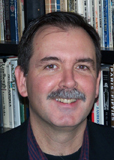 GREGG JONES, an author and projects writer at The Dallas Morning News, has been a Pulitzer Prize finalist and has won numerous awards in a newspaper career that began in 1981. At 25, Jones quit his reporting job at The Atlanta Journal-Constitution and set off for Asia with a manual typewriter and $2,000. Based in the Philippines, he covered the "People Power Revolution," traveled with guerrilla forces and documented seven coup attempts as a freelance correspondent for The (London) Guardian, The Washington Post and other publications.
GREGG JONES, an author and projects writer at The Dallas Morning News, has been a Pulitzer Prize finalist and has won numerous awards in a newspaper career that began in 1981. At 25, Jones quit his reporting job at The Atlanta Journal-Constitution and set off for Asia with a manual typewriter and $2,000. Based in the Philippines, he covered the "People Power Revolution," traveled with guerrilla forces and documented seven coup attempts as a freelance correspondent for The (London) Guardian, The Washington Post and other publications.
Panel Discussion with Doug Swanson: Mining the Narrative: Extracting a Compelling Story from the Investigative Mountain
You’ve spent months gathering government documents, court transcripts, and elusive interviews. How do you transform this mountain of material into a riveting story? Too often investigative reports founder on impenetrable writing. Great digging is obscured by a story that fails to engage and inspire. When The Dallas Morning News took on the subject of big-rig safety in 2006, a key to capturing the attention of readers was building a narrative that would illustrate broader problems reporters had identified. In this session, News reporters Gregg Jones and Doug Swanson will discuss how they transformed a mass of facts and numbers into a powerful story about a Polish trucker and a suburban Dallas family, launching a yearlong investigation of 18-wheeler safety. They will discuss the use of plot, character and conflict to tell stories that shine a light on governmental failures and corporate shortcomings.
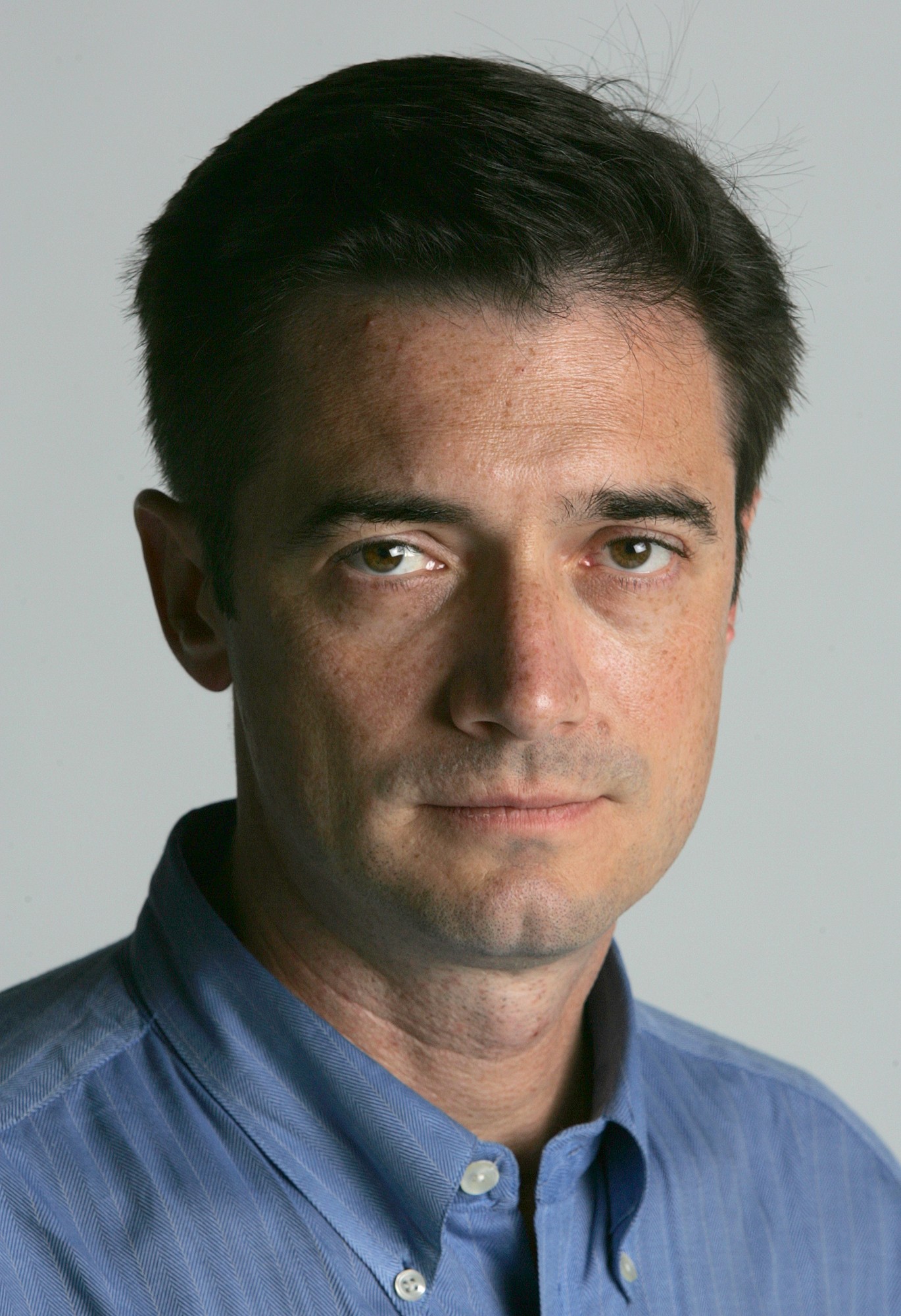 ROB KAISER , is assistant managing editor for Sundays and projects, and the first writing coach at the San Antonio Express-News. Before joining the Express-News, Kaiser was an award-winning reporter for the Chicago Tribune. He wrote front-page takeouts, narrative series and covered several major national stories, including school shootings in Kentucky and Oregon, the homecoming of Jessica Lynch and the Confederate flag controversy in the South.
ROB KAISER , is assistant managing editor for Sundays and projects, and the first writing coach at the San Antonio Express-News. Before joining the Express-News, Kaiser was an award-winning reporter for the Chicago Tribune. He wrote front-page takeouts, narrative series and covered several major national stories, including school shootings in Kentucky and Oregon, the homecoming of Jessica Lynch and the Confederate flag controversy in the South.
Lecture: Keeping the Mortician Awake
Rob Kaiser must be rude. How else to explain his once asking the father of an obese high school football lineman what his son weighed at birth? Or asking a millionaire about the stain on his tie? Or asking a woman what size shoes she wears? Could be that Kaiser simply believes in the telling detail—enough to risk a black eye. But what happens when a journalist writes an impressionist piece? What becomes of detail when the writer squints so as to make out a story’s essence the way Monet must have squinted at those haystacks? What is impressionist journalism, anyway? Whose impression of reality should it reflect? Is it okay for a journalist to filter the world through his or her own perceptions and experiences? How can a writer connect with a story viscerally while staying true to it intellectually? It’s a dance between the head and heart, the impressionist genre, and Kaiser’s footwork might surprise you. So come along as he asks a small-town funeral director the secret to staying awake at the wheel of his hearse while driving a body home from a distant airport in the middle of the night. Visit with him the woman in Room 59 at the Carousel Inn as it grows late in America.
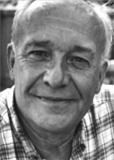 WILLIAM NACK had been a senior writer at Sports Illustrated for nearly 23 years when he retired in 2001 to pursue a career as an author and freelance writer. His work has since appeared in Sports Illustrated, Time, Gentleman’s Quarterly and Golf Connoisseur, among other publications. His work has also been anthologized in numerous books, including David Halberstam’s The Best American Sports Writing of the Century, in seven editions of The Best American Sports Writing, and in Sports Illustrated’s Fifty years of Great Writing.
WILLIAM NACK had been a senior writer at Sports Illustrated for nearly 23 years when he retired in 2001 to pursue a career as an author and freelance writer. His work has since appeared in Sports Illustrated, Time, Gentleman’s Quarterly and Golf Connoisseur, among other publications. His work has also been anthologized in numerous books, including David Halberstam’s The Best American Sports Writing of the Century, in seven editions of The Best American Sports Writing, and in Sports Illustrated’s Fifty years of Great Writing.
Lecture: Building Turf: Reconstructing Scene and Dialogue in Sports Narratives
William Nack spent almost 25 years at Sports Illustrated writing award-winning long-form narratives. The author will demonstrate how scene-setting, the use of dialogue and other fictive devices can enhance the art of old-fashioned storytelling. Nack will deconstruct his narratives on Hurricane Carter, Sonny Liston and the Dempsey-Tunney long-count fight to illustrate some of the storytelling devices and material he employed to write about people and events from another era. Nack will also discuss his memoirs of two great racehorses, Secretariat and Ruffian. Nack believes that the use of literary devices are particularly useful in enlivening otherwise boring investigative pieces; for example, putting a human face on a Little League coach who molested scores of boys over many years before he was caught or bringing to life a horse-killer hired to maim a show jumper so his patron could collect insurance money. In writing sports narratives, Nack says, "You must immerse yourself totally in the subject---in the place and the time of the action, in the era and the moment, in order to convey a real sense of the event you are writing about and the people about whom you're writing.
 MELISSA SHULTZ, a native of Washington, D.C., has done freelance work for print, television and video. Her essays, highlighting humorous aspects of everyday life, appeared in a weekly column for The Frederick News Post. Since relocating to Dallas, Shultz’s essays have been published by The Dallas Morning News and its media properties across the country, as well as The Washington Post.
MELISSA SHULTZ, a native of Washington, D.C., has done freelance work for print, television and video. Her essays, highlighting humorous aspects of everyday life, appeared in a weekly column for The Frederick News Post. Since relocating to Dallas, Shultz’s essays have been published by The Dallas Morning News and its media properties across the country, as well as The Washington Post.
Lecture: Navigating a Career in Freelance Writing: Ten Keys to Success
Whether you’re just starting out, stuck in neutral, or are considering making the transition from full-time employment, insuring your success as a freelance writer requires more than a copy of Writer’s Market and a computer. Melissa Shultz will share her real-life experiences leaving the safety net of full-time work to pursue the world of freelance writing. Learn the questions to consider before making the leap as well as the skills and processes to master once you have. From script and copywriting for trade associations, to ghostwriting for local publishers, to writing for newspapers and magazines, your success is as dependent on your ability to market yourself as it is on your writing skills. Learn how to prepare for the inevitable “rainy day,” conjure up writing ideas, stay connected, and steer clear of the cookie jar when your time is your own.
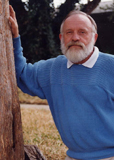 CARLTON STOWERS, a narrative writer for the Abilene Reporter-News, is one of the nation’s preeminent true-crime writers. He’s written more than two dozen nonfiction books, and many have been selections of the Book-of-the-Month Club, Literary Guild, Doubleday Book Club, Mystery Book Club, True Crime Book Club, Preferred Choice Book Club, Playboy Book Club and Guideposts Book Club. Five have been optioned by motion picture and television production companies.
CARLTON STOWERS, a narrative writer for the Abilene Reporter-News, is one of the nation’s preeminent true-crime writers. He’s written more than two dozen nonfiction books, and many have been selections of the Book-of-the-Month Club, Literary Guild, Doubleday Book Club, Mystery Book Club, True Crime Book Club, Preferred Choice Book Club, Playboy Book Club and Guideposts Book Club. Five have been optioned by motion picture and television production companies.
Lecture: True Crime Truth
The ever-growing boundaries of today’s genre known as true crime are as broad as they are flawed. When, during the ‘80s and ‘90s, the marketplace became literally glutted with lurid tales of man’s darkest inhumanities, bookstore shelf space grew by leaps and bounds with titles that promised the reader that he would “go inside the mind of the serial killer” or learn the “bizarre and gruesome story ripped from today’s headlines.” Often published as original paperbacks with a traditional black and red cover, the word “blood” in the title more often than not, and always promising a section of “shocking” photographs, the bad books threatened to choke out the good. Veteran crime writer Carlton Stowers, twice winner of the Mystery Writers of America’s Edgar Allan Poe Award for Best Fact Crime Book, will speak from the high road, explaining the long and demanding process a writer must vow to travel if a quality non-fiction narrative is to result. The crime that draws the author to his story, regardless of how brutal, evil and nonsensical it might be, is but the starting place from which one begins a demanding quest to learn of its effect on loved ones, investigators, even entire communities; to determine just how much justice the judicial system really has to offer; and to introduce the reader, not so much to a deranged, psychopathic murderer but, rather, to the expansive pool of ordinary people damaged by his sudden, dark cruelty, the innocence he has robbed from society.
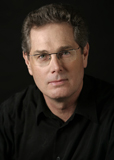 DOUG SWANSON, a reporter and editor for the projects department of The Dallas Morning News, is also the author of five novels. His first book, Big Town, won the John Creasey Memorial Award for Best First Novel given by the British Crime Writers Association. He is currently working on a novel about boxing. At The Dallas Morning News, Swanson has earned a reputation for his probing reporting of complex subjects: a foster care provider who made millions of dollars off troubled children, men on Death Row under questionable circumstances and the grim aftermath of Hurricane Katrina.
DOUG SWANSON, a reporter and editor for the projects department of The Dallas Morning News, is also the author of five novels. His first book, Big Town, won the John Creasey Memorial Award for Best First Novel given by the British Crime Writers Association. He is currently working on a novel about boxing. At The Dallas Morning News, Swanson has earned a reputation for his probing reporting of complex subjects: a foster care provider who made millions of dollars off troubled children, men on Death Row under questionable circumstances and the grim aftermath of Hurricane Katrina.
Panel Discussion with Gregg Jones: Mining the Narrative: Extracting a Compelling Story from the Investigative Mountain
You’ve spent months gathering government documents, court transcripts, and elusive interviews. How do you transform this mountain of material into a riveting story? Too often investigative reports founder on impenetrable writing. Great digging is obscured by a story that fails to engage and inspire. When The Dallas Morning News took on the subject of big-rig safety in 2006, a key to capturing the attention of readers was building a narrative that would illustrate broader problems reporters had identified. In this session, News reporters Gregg Jones and Doug Swanson will discuss how they transformed a mass of facts and numbers into a powerful story about a Polish trucker and a suburban Dallas family, launching a yearlong investigation of 18-wheeler safety. They will discuss the use of plot, character and conflict to tell stories that shine a light on governmental failures and corporate shortcomings.
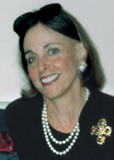 NAN TALESE, is publisher and editorial director of Nan A. Talese/Doubleday, a trade book publishing imprint known for its literary excellence and the quality of the production of its books. Established in 1990, Nan A. Talese/Doubleday is distinguished both by new authors of fiction and nonfiction, as well as by the authors Talese has published for many years, writers who have been staunchly supported by independent booksellers (and more recently Barnes & Noble and Borders) and reviewers.
NAN TALESE, is publisher and editorial director of Nan A. Talese/Doubleday, a trade book publishing imprint known for its literary excellence and the quality of the production of its books. Established in 1990, Nan A. Talese/Doubleday is distinguished both by new authors of fiction and nonfiction, as well as by the authors Talese has published for many years, writers who have been staunchly supported by independent booksellers (and more recently Barnes & Noble and Borders) and reviewers.
Discussion: How do you get a book editor interested in your nonfiction narrative? How do you get a book critic to read it and review it? And other hot topics in literary nonfiction book publishing
Nan Talese is publisher and editorial director of Nan A. Talese/Doubleday, a trade book publishing imprint known for its literary excellence. She enjoys a close editorial relationship with such bestselling nonfiction authors as Margaret Atwood, Thomas Cahill, Pat Conroy, Susan Hertog, Thomas Keneally, Ian McEwan, Peter Ackroyd and Alex Kotlowitz, a speaker at the first Mayborn Conference. Talese will sit down with veteran book reviewer Jerome Weeks to discuss the nonfiction book publishing business in general, and her working relationship with authors in particular. If you want to know what sort of nonfiction book proposals capture her attention, whether she’s willing to consider proposals from first-time authors, whether she’s willing to read a “rough draft” or only well-polished finished manuscripts, to what extent she edits her authors’ work, how often she sends manuscripts back for revision, whether the deceptions of James Frey, author of A Million Little Pieces, has changed the way she scrutinizes manuscripts, this is a panel discussion you won’t want to miss. Talese will also take questions directly from our conferees.
Moderated by Jerome Weeks, book critic of The Dallas Morning News.
www.randomhouse.com/nanatalese/about.html
 CHRISTINE WICKER, former religion reporter for The Dallas Morning News, is the author of the highly acclaimed, national bestseller Lily Dale: The Town That Talks to the Dead and Not In Kansas Anymore: Dark Arts, Sex Spells, Money Magic, and Other Things Your Neighbors Aren’t Telling You. Publishers Weekly says Lily Dale "is a portrait, not just of an upstate New York town built 122 years ago on old-fashioned spirituality, but also of the mediums who practice there, their clients, and Wicker herself, who lets details of her own spiritual beliefs lightly shade her travels to Lily Dale."
CHRISTINE WICKER, former religion reporter for The Dallas Morning News, is the author of the highly acclaimed, national bestseller Lily Dale: The Town That Talks to the Dead and Not In Kansas Anymore: Dark Arts, Sex Spells, Money Magic, and Other Things Your Neighbors Aren’t Telling You. Publishers Weekly says Lily Dale "is a portrait, not just of an upstate New York town built 122 years ago on old-fashioned spirituality, but also of the mediums who practice there, their clients, and Wicker herself, who lets details of her own spiritual beliefs lightly shade her travels to Lily Dale."
Lecture: Interesting Isn't Enough: Learning to Tell the Deepest Truth You Know.
For a journalist, just the fact that something unusual or momentous has occurred is enough for a great story. For a nonfiction author, that's only the beginning of what's needed for a great book. Fascinating stories, cultural context, historical background, and great writing are the building blocks, but they don't make a great book either. Even deep thinking about what it all means and how it fits together is only the secondary layer. The third element, which may be the most difficult in a reporter's transition to an author, is sometimes called the story arc. Defined by an editor at Harper San Francisco as "what makes a reader put down $24.95 for a book." This element often comes from the writer's overriding, passionate reason for writing this particular book. One editor called it, "that thing that you know for certain that others would be fools not to realize." Wicker calls it the deepest truth you know. Writer Annie Dillard seems to be talking about this element when she advises writers that they should be writing not about what interests them most but what interests only them. Wicker will be giving examples from the work of others and from her own books and experience with editors to talk about what this element is and isn't, how to get it, and how important it is to editors, readers and to writers as they struggle to understand what it is that they are really trying to convey.

